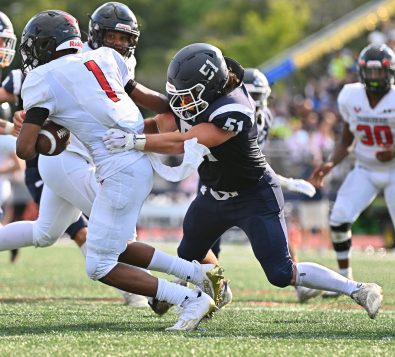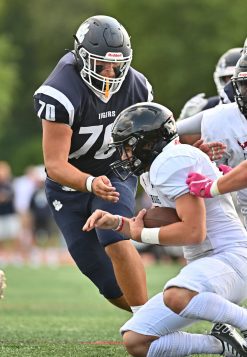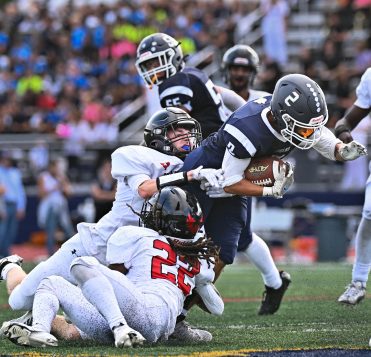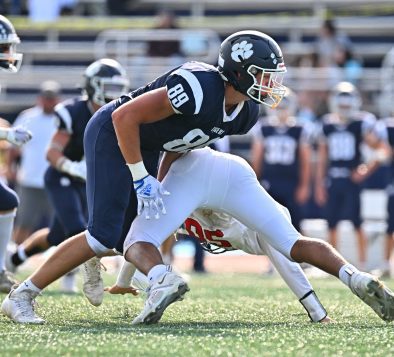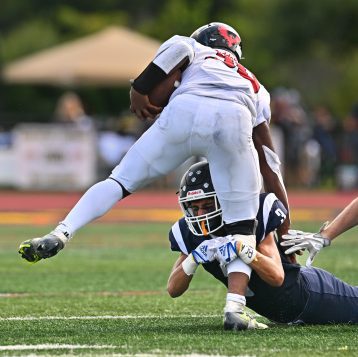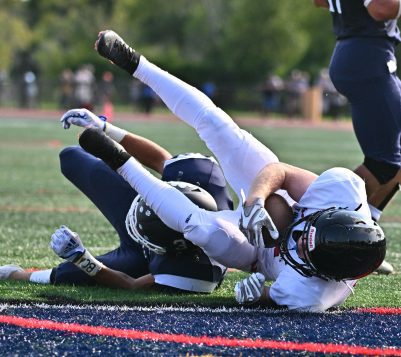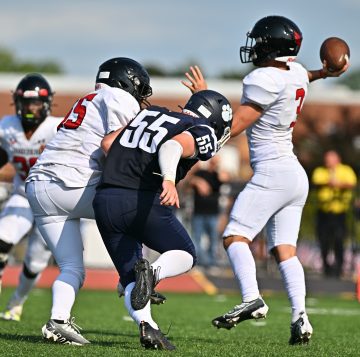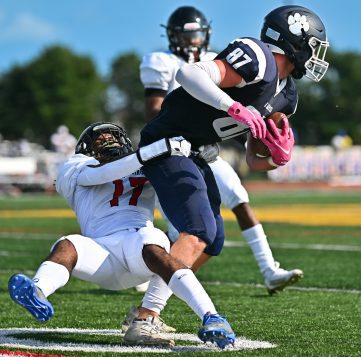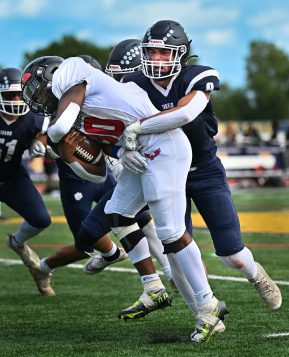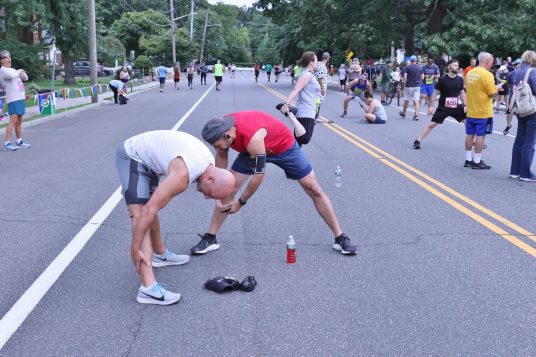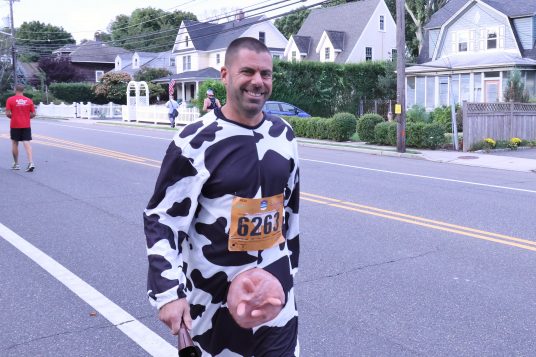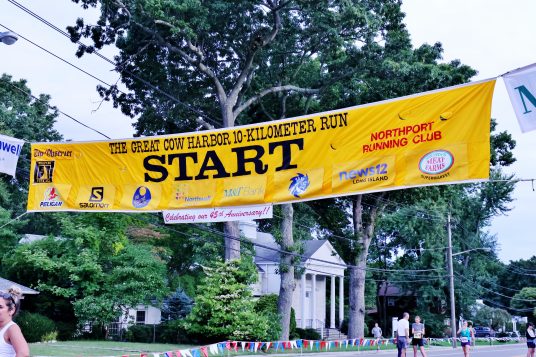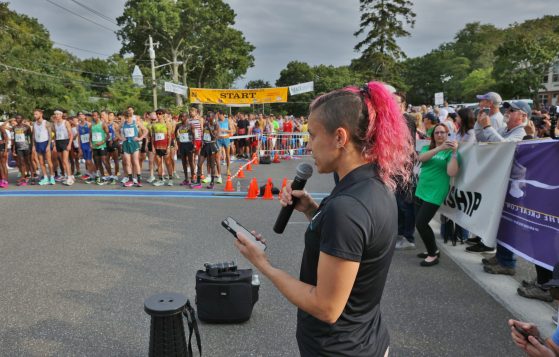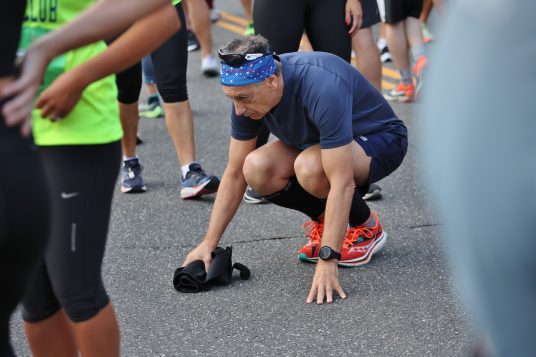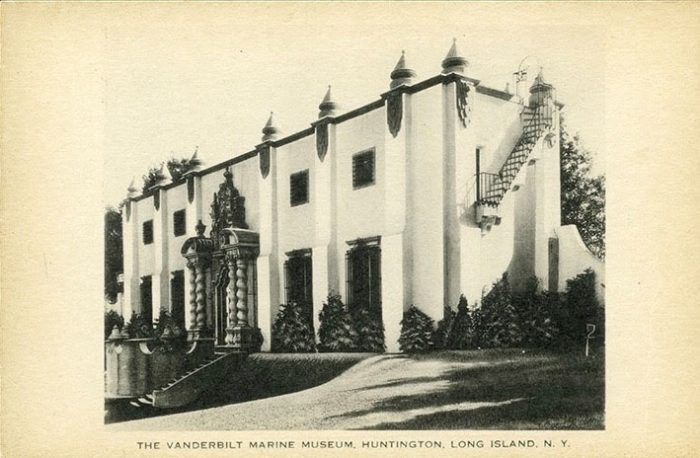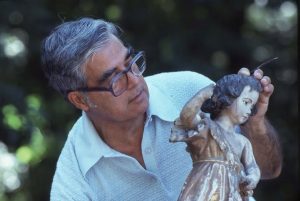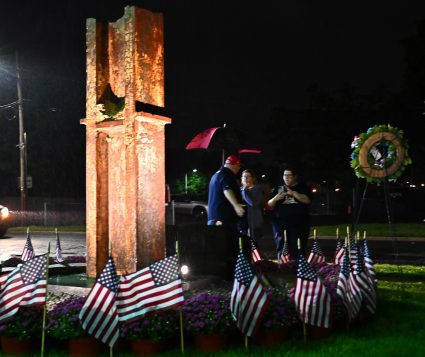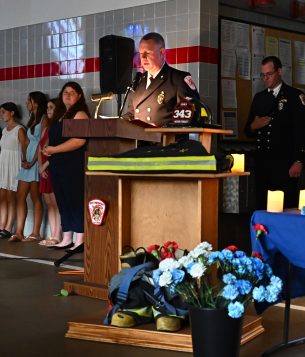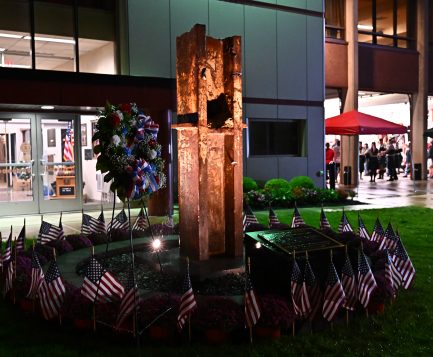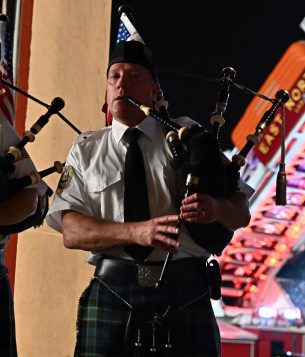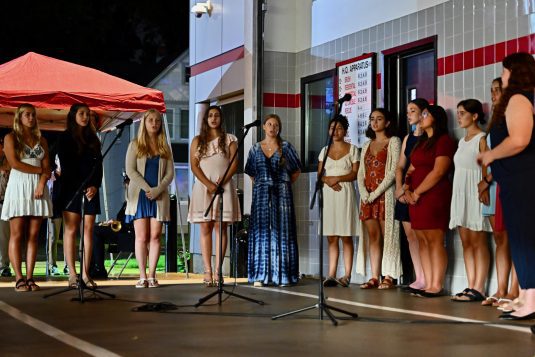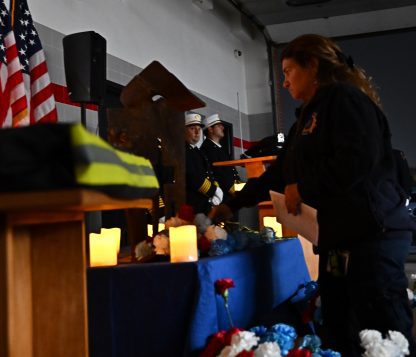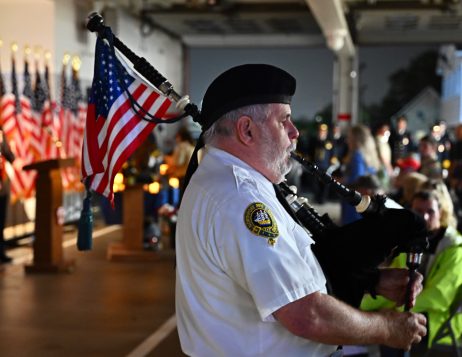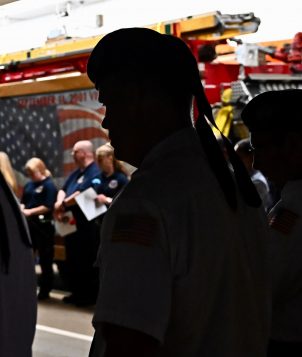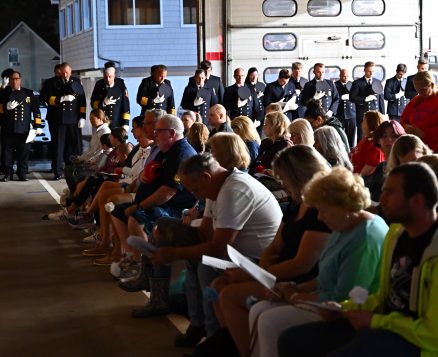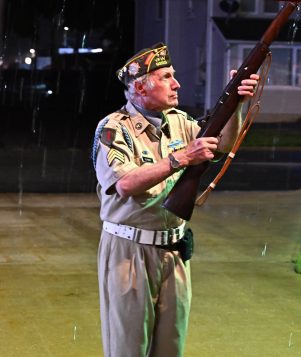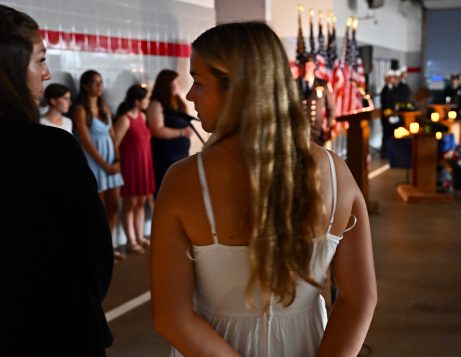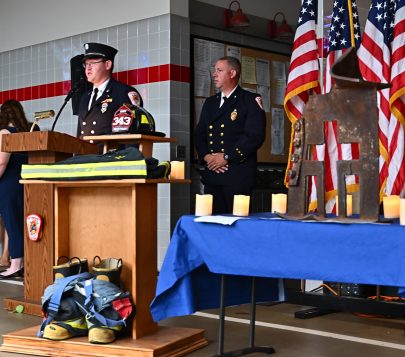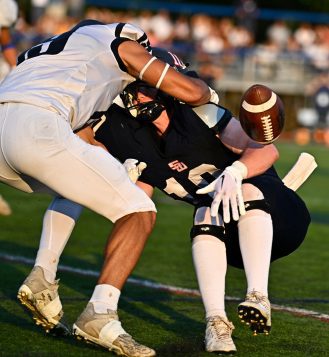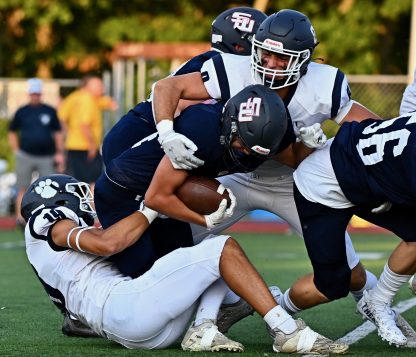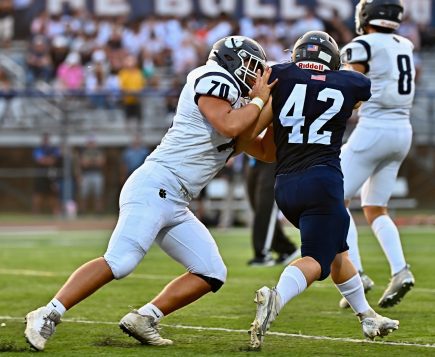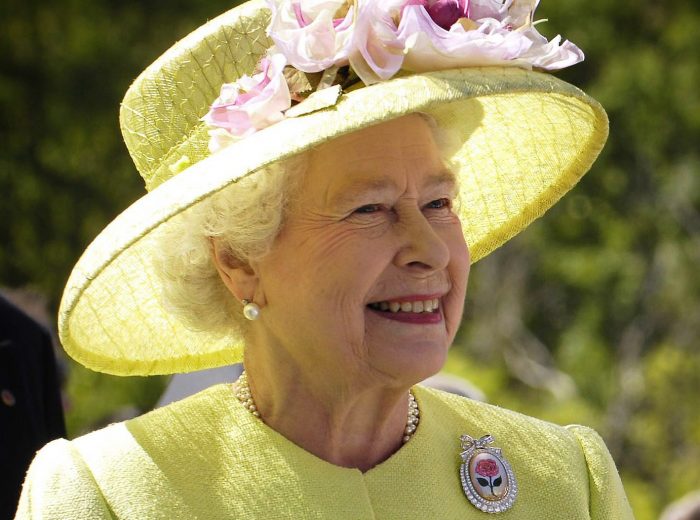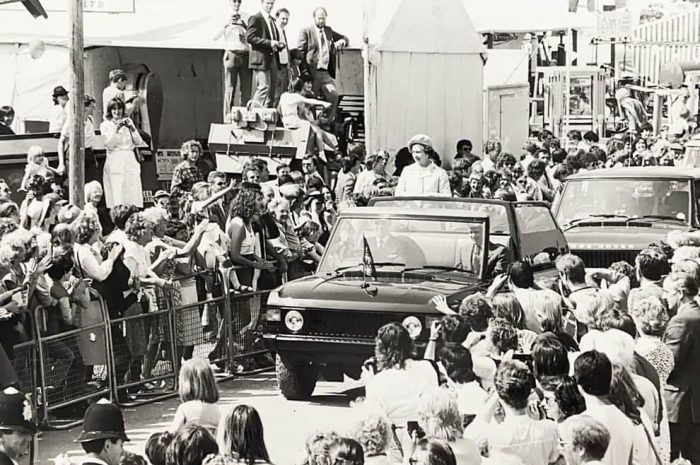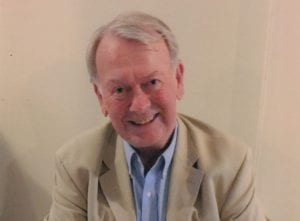Video by Bill Doherty
By Donna Deedy
While boating alone just outside of Port Jefferson Harbor over the Labor Day holiday, South Setauket resident Bill Doherty had what he called a once-in-a-lifetime thrill. First, a big splash caught his eye. Then, another.

“I kept my eye on the water thinking it could be a boat accident or something,” he said. “I undid the anchor to get a little closer — but not too close — and realized it was a whale.”
For 15 to 20 minutes, Doherty watched in amazement as the whale put on a show spouting and breaching in the water about a mile off Old Field Point. He recorded it on a cellphone video just so he could prove to his friends this was no joke.
A big yacht and another passing boat, he said, cut their engines nearby so the passengers could enjoy the spectacle.
Whale sightings, as unlikely as it might seem, are becoming more regular events in the New York area, including the Long Island Sound.
Barrett Christie is director of animal husbandry at The Maritime Aquarium in Norwalk, Conn. His team has been tracking whale activity in the Sound since the museum opened in 1988.
Almost every year since 2009, Christie said, more and more yachters and fishermen are seeing marine mammals in local waters.
Since 2015 whale counts, predominantly humpbacks but also minke whales, have been ramping up. The aquarium’s annual whale counts range from no sightings at all, to one per year, up to as many as a half dozen or more.
The aquarium’s observations, he noted, are consistent with the findings of other researchers. A Staten Island-based research organization Gotham Whale, for instance, documented in 2011 three whales and five sightings. Recently, the number was up to more than 260. The whale population has become so bountiful around the mouth of New York Harbor, Gotham Whale now coordinates research expeditions with the public in conjunction with five commercial whale watching vessels.
Healthier ecosystems
Scientists praise the Clean Water Act for improving water quality to protect marine habitats. The landmark environmental law, passed in 1972, regulates pollutants from agriculture, industry and wastewater to prevent or limit discharges into waterways.
“It’s taken fish populations more than 30 and up to 50 years to rebound,” Christie said. “We’re seeing not only more whales, but also more Atlantic white-sided dolphin, more seals, more sharks and further down the food chain more sand eels and herring.”
After a long history of decline, Christie explained that forage fish such as menhaden or bunker and alewife, both in the herring family, have returned to spawn in the many freshwater tributaries that flow into the Sound.
“The turnaround is miraculous,” Christie said.
Maxine Montello is a wildlife ecologist and the rescue program director at the New York Marine Rescue Center. She teaches a marine mammal and sea turtle course at Stony Brook University.
After viewing Doherty’s cellphone video, she quickly identified that whale as a humpback. It’s huge pectoral fins, visible as the creature leaped out of the sea, made it easy to distinguish.
Humpbacks, she said, are baleen whales — they have no teeth. To capture its prey, it swallows and strains seawater through the long and narrow strips of fingernail-like material called baleen that grows out of its jaw. Through this feeding process, it consumes krill, plankton and small fish, such as menhaden.
A flourishing menhaden population in the food chain, researchers are noticing, attracts whales.
In fact, researchers from the Atlantic Marine Conservation Society, when conducting aerial surveys, track whales by following menhaden movement.
Some 15 years ago, they saw few clusters or bait balls of menhaden along Long Island’s southern coastline. Today, Rob DiGiovanni, the society’s chief scientist, said a continuous stream of bunker stretches from Montauk to the New York Bight. Consequently, whales are more abundant there and traveling closer to shore and staying in the area longer.
Montello and DiGiovanni also praise the Clean Water Act for improving marine habitats. But, with humpbacks near extinction in 1972, another bold act of Congress that year also deserves credit for reviving the whale population.
“I would say that the Marine Mammal Protection Act has really changed the game for marine mammals,” Montello said. “This act has provided great protection and awareness of these charismatic species.”
This law prohibits hunting, capturing, collecting, harassing or killing marine mammals such as whales, dolphins, seals and manatees.
Whaling once was one of Long Island’s most important commercial industries, according to the Cold Spring Harbor-based Whaling Museum with Cold Spring Harbor, Greenport and Sag Harbor serving as the Island’s three whaling ports.
Today, people are armed with cameras and spreadsheets instead of harpoons, and more interested in spearheading marine restoration projects that aim to protect rather than slaughter these giant marine mammals.
If you are lucky enough to spot a whale, scientists want to hear from you with photos. Like human fingerprints, whales bear distinct characteristics on their tails. Gotham Whale has an extensive and growing archive of these tail shots. Through such photos, researchers there have been able to identify and track the activities of 269 individual whales, according to Paul Sieswerda, Gotham Whale’s executive director.
“It would be interesting to find out if whales — our New York City whales — are the same ones traveling through the Sound,” he said.
To report whale sightings, contact: Atlantic Marine Conservation Society at www.amseas.org/reportsighting; Gotham Whale at www.gothamwhale.org/citizen-science; The Maritime Aquarium, Norwalk at 203-852-0700.

